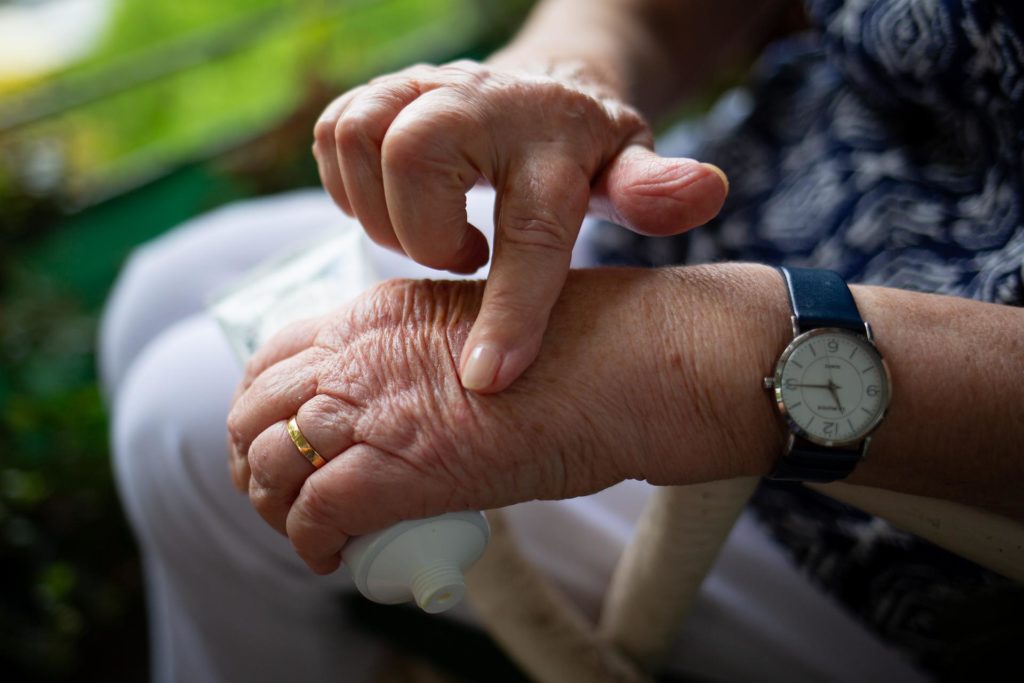Of the many genes involved in rheumatoid arthritis and osteoporosis, the researchers identified two essential genes, ATXN2L and MMP14, most strongly linked to both diseases—credit Lo et al.
Rheumatoid arthritis is a prevalent condition that affects approximately 17 million people globally. This disease occurs when the immune system mistakenly attacks the joints, leading to pain, swelling, and damage to the cartilage and bones. Additionally, individuals with rheumatoid arthritis are at an increased risk of developing osteoporosis, a more serious condition that can arise from the bone damage caused by the immune response as well as from certain medications used to treat the disease.
In the journal APL Bioengineering from AIP Publishing, researchers from Da-Chien General Hospital, China Medical University, and Chang Gung University used analytical tools and machine learning algorithms to identify two genes associated with rheumatoid arthritis and osteoporosis. These genes could serve as diagnostic tools and potential targets for treatment.
Both diseases revolve around a key mechanism that helps regulate the body’s functions. Apoptosis, or programmed cell death, is an essential process that immune cells use to eliminate malfunctioning or unnecessary cells. However, malfunctions in this process can cause immune cells to mistakenly target random cells, often resulting in severe consequences.
“Excessive apoptosis of bone-forming cells in rheumatoid arthritis leads to joint destruction and inflammation,” stated author Hao-Ju Lo. “This same process also results in weakened bones in osteoporosis, highlighting the necessity of managing both conditions concurrently.”
Because of its central role, the researchers set out to find genes involved with apoptosis that were closely linked to both diseases. Drawing from an extensive database of genetic information, they gathered dozens of sequenced genomes from people with rheumatoid arthritis and osteoporosis to look for similarities. Combing through this mountain of genetic data was no easy task, so they turned to recently developed computational methods to narrow their search.
“We used bioinformatics tools to analyze large gene datasets, focusing on genes active in rheumatoid arthritis and osteoporosis,” said Lo. “We applied machine learning techniques, such as Lasso and Random Forest, to refine our search, identifying two key genes — ATXN2L and MMP14 — that play significant roles in both diseases.”
According to their analysis, these two genes are significantly associated with the progression of rheumatoid arthritis and osteoporosis. ATXN2L regulates processes like apoptosis, so malfunctions in this gene are likely to trigger both rheumatoid arthritis and osteoporosis. MMP14 contributes to building extracellular tissue like cartilage and could be responsible for the breakdown of joint tissue that leads to rheumatoid arthritis.
“Our analysis revealed that these genes are involved in immune regulation and bone metabolism, suggesting they could be useful markers for diagnosing or treating rheumatoid arthritis and osteoporosis,” said Lo.
With two potential targets identified, the authors plan to use these results as a starting point to develop new treatment options for patients suffering from these two linked diseases.
“We plan to validate these findings with experimental studies and explore how targeting these genes could improve treatment outcomes,” said Lo. “Our future research may also involve developing personalized therapies, leveraging AI and machine learning to predict which patients are most at risk for osteoporosis.”
###


